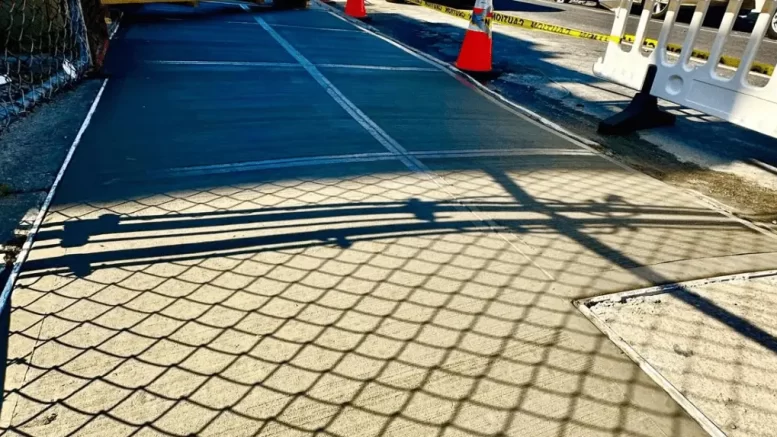In New York City, it is common for people with disabilities to experience accessibility challenges while using the sidewalks or any other public property. Non-compliance with ADA guidelines and city regulations can lead to severe injuries among disabled people.
New York City has certain rules for installing safe sidewalks for everyone. Moreover, the American Disability Act has certain guidelines that commercial property owners must follow.
Want to know these guidelines and save yourself from legal liabilities? Well, we are here with a detailed guide on addressing accessibility challenges for people with disabilities.
Importance of Accessible Sidewalks
Uneven, damaged, and broken curb ramps on sidewalks make them difficult for people to use. An accessible sidewalk is a path that helps people reach their destination, whether it is school, work, or a social event. The American Disability Act states that making sidewalks functional, safe, and accessible for everyone is compulsory. By following these guidelines, you can make sidewalks accessible for everyone and save yourself from legal liabilities
Common Accessibility Challenges
Sidewalks that are not maintained can pose serious health hazards and may lead to liability charges. Some common sidewalk challenges that people with disability may experience are given below
- Uneven Surfaces: Cracks, bumps, and trip hazards on sidewalks put people who have trouble moving around in great danger.
- Lack of Curb Cuts: It is hard for wheelchair users and people with other mobility devices to cross the street when curb cuts and ramps are missing or poorly designed.
- Narrow Sidewalks Blocked by Obstacles: Signs, poles, parked cars, and other things can make sidewalks narrow, which makes it hard for disabled people to use.
- Surfaces That Slip: Weather-related conditions like ice, wet leaves, or uneven surfaces can make the ground slippery, which makes it more likely for pedestrians, especially those who have trouble moving around, to fall.
- Lack of Tactile Paving or Audio Warnings: People who are blind or have low vision find it hard to safely cross street intersections when there is no tactile paving or audio signals at crossings.
Impact on People with Disabilities
Are you curious about the consequences that people with disabilities may face because of a broken sidewalk? Then this next section is for you.
- Increased Risk of Falls and Injuries: Accessibility barriers on sidewalks make it more likely for people to fall and get hurt, especially those who have trouble moving around or keeping their balance.
- Difficulties Navigating Independently: Limited accessibility features make it hard for disabled people to use sidewalks without help, so they have to rely on others.
- Limited Access to Public Transportation and Destinations: Sidewalks that are hard to get to make it harder to get to public transportation, shops, restaurants, and other important places. This makes it harder to get involved in the community and make friends.
- Social Isolation and Lower Quality of Life: Not being able to use sidewalks can make disabled people feel alone and lower their quality of life, which can affect their overall health and mental health.
Solutions for Improved Sidewalk Accessibility
You can maintain your sidewalks by yourself or you can hire a professional sidewalk experts to get your work done. By following the tips given below, you can make sidewalks accessible and functional for people with disabilities.
- Keep Surfaces Smooth and Even: Taking care of cracks and uneven surfaces on a regular basis makes walking safer and easier.
- Proper Curb Cuts and Ramps: Installing and maintaining curb cuts and ramps that are properly designed will make it easier for people in wheelchairs and other mobility aids to get from one place to another.
- Enough Sidewalk Width: Ensuring enough sidewalk width keeps everyone safe as they walk.
- Removing Obstructions: Clearing the sidewalks of signs, poles, and stopped cars makes them easier for people with disabilities to use.
- Improving Surface Conditions: Getting rid of ice or clearing away leaves from slippery areas lowers the risk of falls, especially when it’s raining or snowing.
- Adding Tactile Paving and Audio Signs: Putting in tactile paving and audio signs at crossings helps people who are blind or have low vision stay safe on the sidewalks.
Benefits of Improved Accessibility:
There are so many benefits to keeping your sidewalks accessible and maintained, some of which are discussed below
1 Safety: Making sidewalks easier to get to lowers the risk of crashes and injuries for pedestrians, including disabled people.
- More Independence: accessible sidewalks let disabled people get around their neighborhoods on their own, which encourages more independence and liberty.
- More Opportunities: Better accessibility makes it easier to get to companies, public transportation, and recreation centers, which encourages people to be a part of community life and include themselves in it.
- Better Quality of Life: Making sidewalks more accessible removes obstacles and encourages acceptance, which improves the quality of life for disabled people and is good for their physical and mental health.
Conclusion
Not only are ADA-compliant sidewalks the law, but they are also an important part of keeping cities safe and accessible. By prioritizing accessibility to our sidewalks, we can make it convenient for people with disabilities.
For the installation of ADA sidewalks, you can hire professionals. There are professionals like Sidewalk Repair Contractors NYC who know the ADA rules and install the sidewalks according to the city code.

Be the first to comment on "Addressing Accessibility Challenges for People with Disabilities"